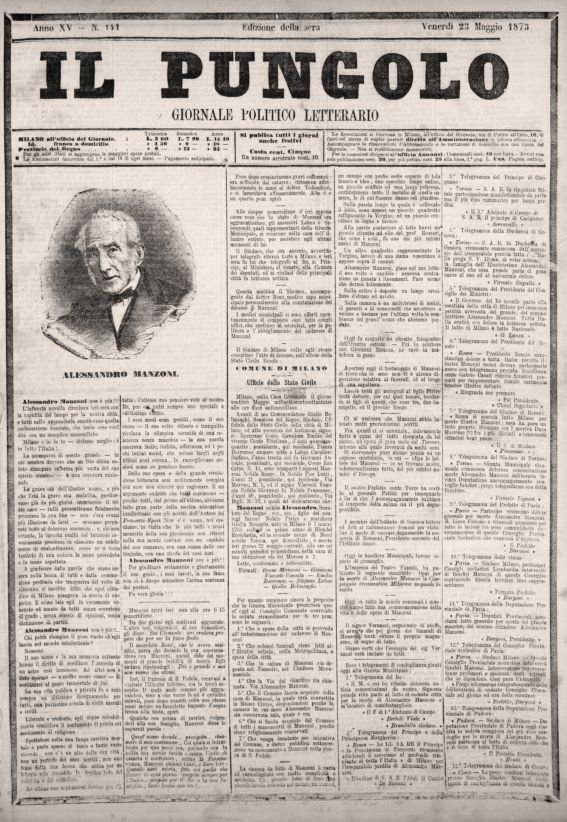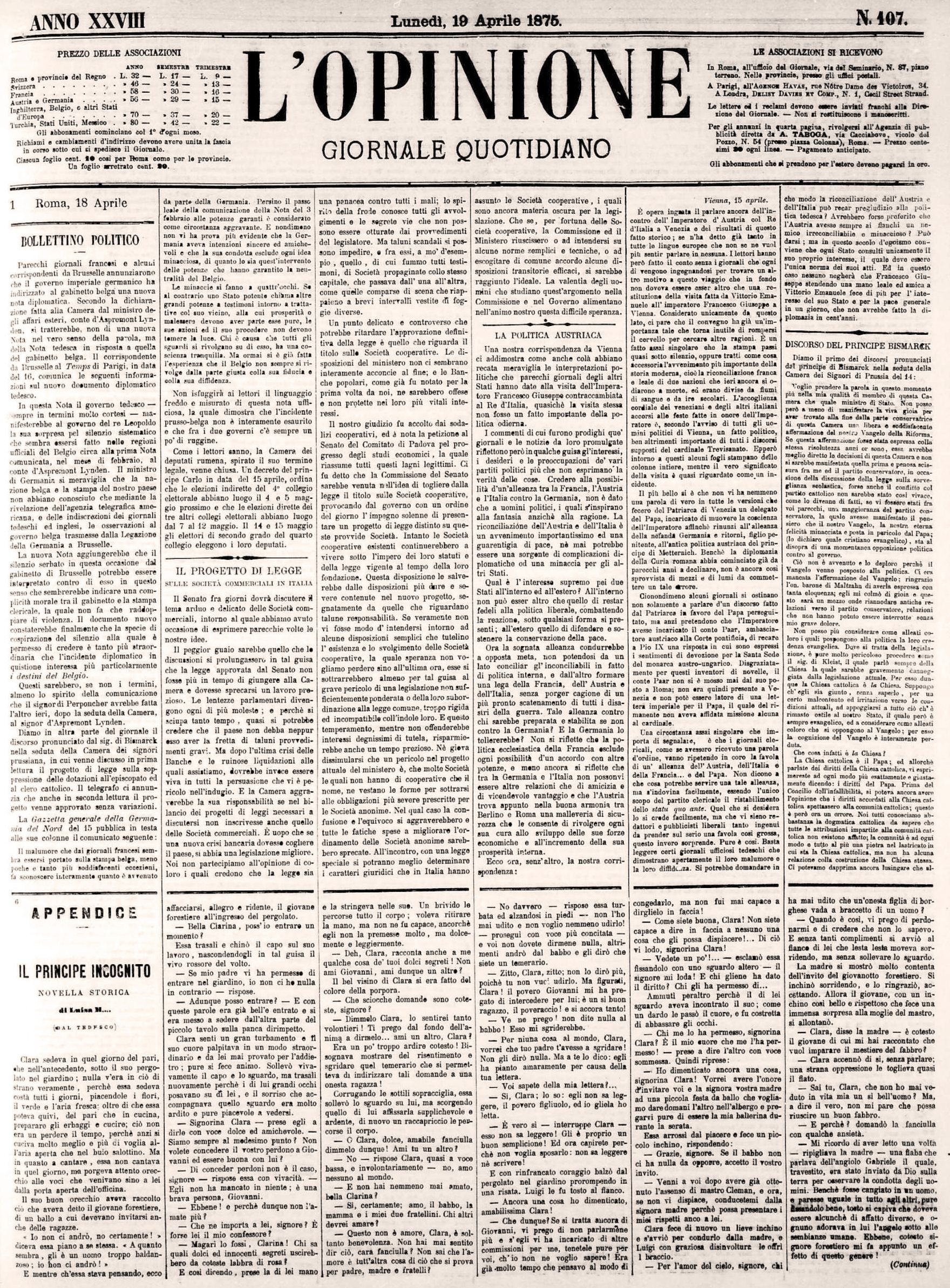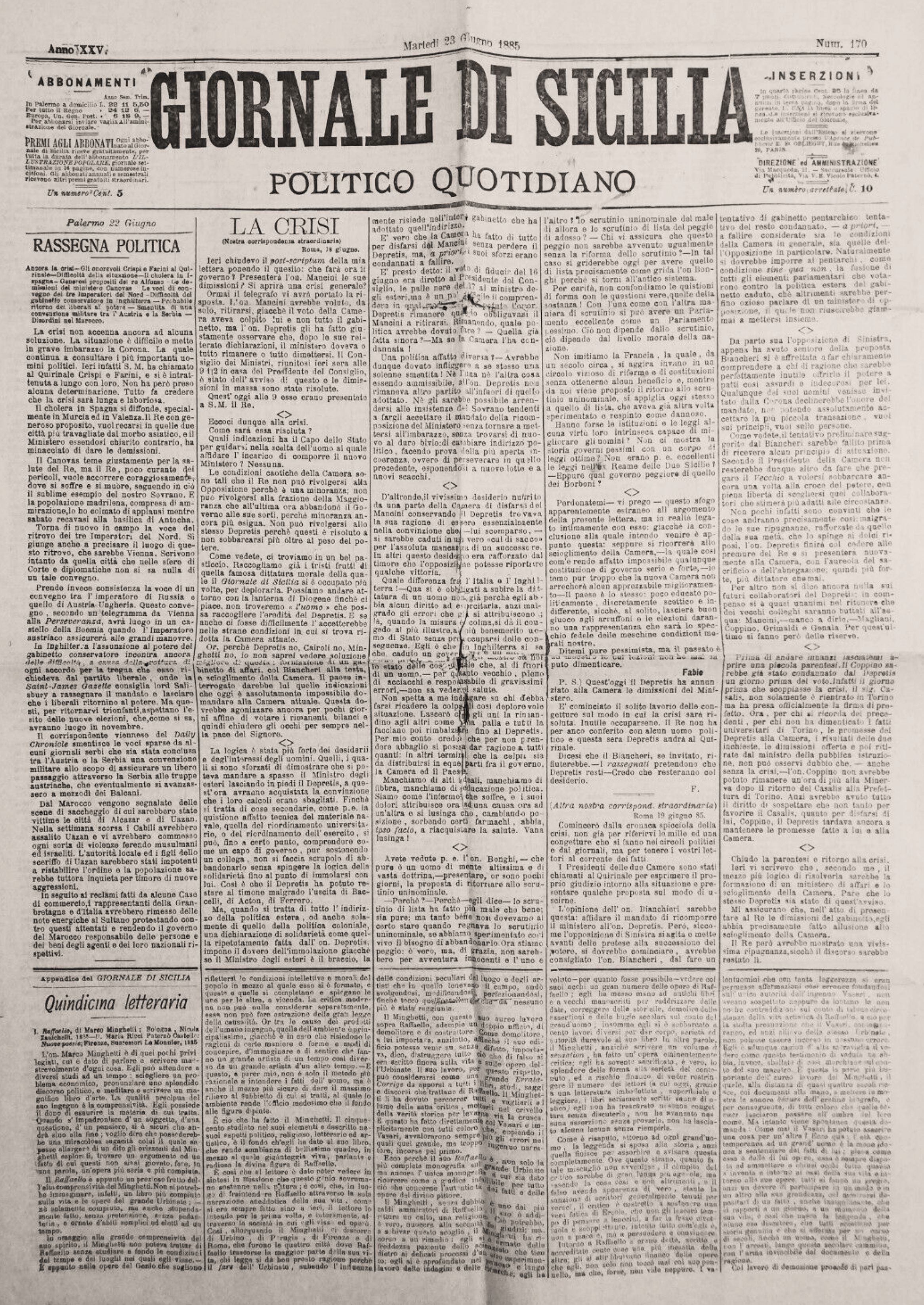Periodicals are the preferential documentation to understand the relationship between musical life and urban space: they allow studying the narrative, the development and transformation of different musical aspects. The musical entries are the starting point to elaborate and successively map the data.
Among the many periodicals printed at the time in Milan, there were a few highly representative of the city’s music culture, i.e.::
«Il Pungolo», ddirected by Leone Fortis, with collaborators of the calibre of A. Boito, E. Praga, and I. U. Tarchetti. The journal had different editorial adjustments between 1859 and 1892, when it definitively closed down.
«La Perseveranza», reporting both national and international correspondences, also on musical topics. Among its most active editors, F. Filippi was a critic with a key role in Milan’s cultural circles.
For both journals, the data are extracted for the entire time span of the project, i.e. years 1866-82.


Regarding Florence, the following journals will be taken into account:
«Il Fanfulla», 1870-71: published in Florence only for one year (because in October 1871 it moved to Rome). The journal reports the events in town from an unparalleled perspective, often with a sarcastic tone typical of its authors, such as P. Coccoluto Ferrigni (Yorik).
«La Nazione», 1872-81: one of the most important Italian newspapers of the 19th century: the breadth, the thoroughness of the news, and the authority of the journalists provided a comparison of Florence’s musical life with other Italian towns.
«La Gazzetta d’Italia», 1877-82: one of the most influential journals of unified Italy, for which G.A. Biaggi wrote for many years. As a prominent figure of the national music journalism, he wrote under the pseudonym of Ippolito D’Albano.
This list is completed by the journals already included in the database ArtMus and filed during the 2012 PRIN: «L’Opinione», 1866-72; «La Nazione», 1866-71; «L’Opinione Nazionale», 1867-71; «La Riforma», 1867-71; «La Gazzetta di Italia», 1874-76.
Regarding Bologna the “Monitore di Bologna” has been selected because it was definitively the most important newspaper in town and the richest in terms of musical news. The years 1871-76 have been taken into account, thus enabling a comparison with Florence’s musical life, as described in the “Nazione”
Rome boasts a vast publishing activity throughout the 19th century, before and after the Unification and after its role of capital of the Kingdom. On the one hand, the principal newspapers channel some information; on the other hand, specialized journals condense the information of the cultural and artistic life in Rome. Therefore, two perspectives intertwine: the ordinary information – with the «Osservatore romano» and the «Giornale di Roma» (1866-70), both managed and directed by the Vatican – and the specific information on the musical practices and its venues: «L’Eptacordo» (1867-71), and, after the Unification, «L’Opinione» (1871-75) presenting Francesco D’Arcais’ articles, «Il fanfulla» (1871-75), and «Il diritto» (1871-75).


As per South Italy, Palermo’s research unit has taken into account two important newspapers active in Naples and Palermo, capitals of the ex-Kingdom of the Two Sicilies: «Il corriere del mattino» (1873-88), directed by E. Scarfoglio, and the «Giornale di Sicilia». The latter, founded by the liberal G. Ardizzone (1860), once director of the «Giornale officiale di Sicilia», was still active and has been examined between 1866 and 1876.